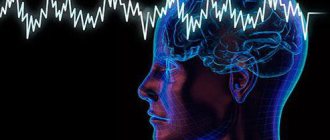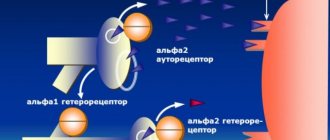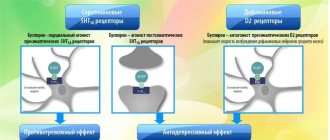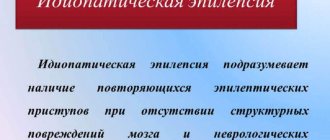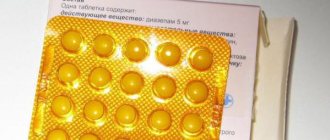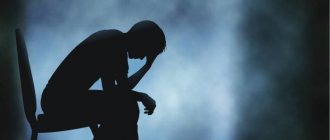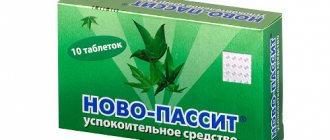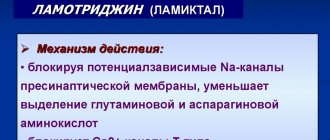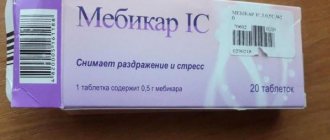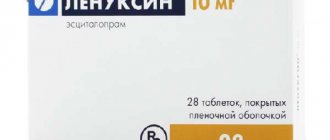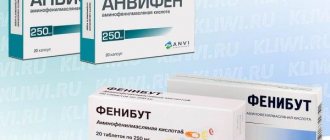Release form and composition of Triftazin
Triftazine is available in the form of tablets and solution for injection, the main active ingredient of which is trifluoperazine.
The excipients of Triftazin are:
in solution for injection - water for injection, sodium citrate for injection;
in tablets - potato starch, refined sugar, colloidal silicon dioxide, magnesium stearate, precipitated calcium carbonate, indigo carmine, gelatin, beeswax, talc, glycerin, vaseline oil.
Compound
Tablets for oral administration of 1, 5 and 10 mg of trifluoperazine. 0.2% solution for injection, contains 2 mg of trifluoperazine.
READ MORE: Sunflower root medicinal properties reviews. Treats the respiratory tract. Sunflower root cleanses the body of deposited salts
Film-coated tablets, yellow or blue with a slight green tint, round, slightly biconvex, odorless. Packaged in contour cell packaging of 10 or 50 tablets, 1 and 5 cells in a cardboard box. Or in a polymer or glass jar of 50 or 100 tablets, one jar in a cardboard box.
Solution for injection - colorless, transparent, in ampoules of 1 ml, 5 or 10 ampoules per blister pack or cardboard box.
active ingredient: 1 tablet contains trifluoperazine 5 mg
excipients: lactose monohydrate, corn starch, microcrystalline cellulose, povidone, colloidal silicon dioxide, sodium croscarmellose; stearic acid hypromellose; titanium dioxide (E 171) indigo (E 132).
contains trifluoperazine 5 mg.
According to its group affiliation, the drug "Triftazin" belongs to strong antipsychotic drugs with a pronounced antiemetic effect. The main active ingredient is a compound from the group of phenothiazines - trifluoperazine, which can affect not only the central nervous system, but also its peripheral parts, due to which, in fact, it has an antiemetic effect.
https://www.youtube.com/watch?v=upload
The solution for injection is a clear, colorless liquid without a specific odor or taste. Triftazin tablets are round, blue-coated, white or almost white at the break.
Pharmacological action of Triftazin
Triftazine is an antipsychotic drug derived from a phenothiazine. Presumably, the antipsychotic effect of phenothiazines is associated with blocking dopaminergic postsynaptic mesolimbic receptors in the brain.
The drug has a strong antiemetic effect based on inhibition of dopamine D2 receptors in the chemoreceptor trigger zone of the cerebellum and blockade of the vagus nerve in the gastrointestinal tract.
Triftazin exhibits alpha-adrenergic blocking activity and is capable of exerting a certain activating effect.
The hypotensive and anticholinergic effect is weakly expressed.
The drug has a pronounced extrapyramidal effect.
It is superior to chlorpromazine in its antipsychotic effect. But, unlike it, it does not have antispasmodic, antihistamine, or anticonvulsant effects.
Drugs that can replace Triftazin
Analogues of Triftazin are quite numerous and have advantages and disadvantages over it.
Exazin
Pharmacological group – neuroleptics. It is used for schizophrenia, psychosis, hallucinatory states, and vomiting of central origin.
The active substance component is trifluoperazine, the concentration of which in the drug is similar to Triftazin.
Contraindications, precautions and application features are similar to Triftazin. It is possible to use the drug during pregnancy if the benefit to the mother outweighs the potential risk to the fetus.
Available in the form of tablets and solution for intramuscular injection.
Stelazine
Belongs to the pharmacological group of neuroleptics and has antipsychotic properties. Dosage form: tablets and solution for intramuscular injection.
https://www.youtube.com/watch?v=ytaboutru
Indications for use, treatment features and contraindications are similar to Triftazin.
Contains one active component – trifluoperazine. Each tablet contains 1 mg or 5 mg of the active substance, and the solution contains 1 mg per 1 ml.
Trazyn
The drug is a neuroleptic and has an antipsychotic effect.
Indications for use: similar to Triftazin.
Trifluoperazine is the active component of the drug and determines its medicinal properties. The content of the active component in the tablets is higher than in Triftazin (5 and 10 mg per tablet).
Contraindications and features of use are similar to Triftazin. Treatment with this drug during pregnancy is possible if the benefit to the mother outweighs the potential risk to the child.
Release form: tablets; solution for intramuscular injection.
Contraindications to the use of Triftazin
According to the instructions, Triftazin cannot be used for:
- high sensitivity to the drug, as well as to other phenothiazines;
- pronounced depression of the functions of the central nervous system and comatose states;
- severe cardiovascular diseases;
- traumatic brain injuries;
- progressive diseases of the spinal cord and brain;
- severe liver failure;
- inhibition of bone marrow hematopoiesis;
- pregnancy and lactation;
and also up to 3 years of age.
The drug is used cautiously for:
- alcoholism;
- valvular lesions of the heart;
- angina pectoris;
- pathological changes in the blood;
- breast cancer;
- angle-closure glaucoma;
- liver or kidney failure;
- prostatic hyperplasia;
- exacerbation of peptic ulcer;
- diseases that are accompanied by a high risk of thromboembolic complications;
- epilepsy;
- Parkinson's disease;
- chronic diseases that are accompanied by breathing problems;
- myxedema;
- Reye's syndrome;
- cachexia, vomiting;
as well as in old age and in patients who are exposed to high temperatures.
special instructions
The above-mentioned undesirable effects can be mitigated by symptomatic therapy or dose adjustments. O is required only if there are serious disturbances in the functioning of the patient’s organ systems. So, let's look at the basic techniques and methods of getting rid of or mitigating unwanted reactions of the body to the drug.
When tremors or seizures occur, in most cases, specialists decide to reduce the patient’s doses of the drug or temporarily stop taking it. In particularly severe cases, treatment with antiparkinsonian drugs, barbiturates or caffeine preparations (intravenous administration) may be required.
If pronounced symptoms of insomnia or motor disinhibition or agitation appear, it is not recommended to increase the starting dose of the drug. As a rule, within a few days the body adapts to the new medicine, and unwanted symptoms gradually disappear. Otherwise, treatment with Benzodiazepine or Propanolol may be required.
A condition such as tardive dyskinesia, which is mentioned among the side effects when taking the drug Triftazine, reviews of which will be described below, most often develops as a result of long-term use of the drug or soon after its discontinuation. Experts note that dyskinesia (tardive) is most often diagnosed in elderly patients.
Some side effects caused by taking the drug are incompatible with activities such as driving vehicles and operating complex machinery. It is better to abstain from them during treatment with Triftazin.
READ MORE: Alcohol tincture of propolis for oral use
If extrapyramidal disorders develop, it is necessary to reduce the dose of triftazine, and if the disorders continue, discontinue treatment.
During the treatment period, you should exclude work that requires concentration, quick reactions, work related to machinery, and also stop driving a car.
Triftazine is used with caution in patients with glaucoma, epilepsy, prostate adenoma. It is not recommended to prescribe the drug to patients with blood diseases or altered laboratory blood parameters until the cause is established, with Raynaud's syndrome, Parkinson's disease, gastric and duodenal ulcers, and urinary retention.
Method of administration and dosage of Triftazin
Triftazin tablets are taken orally.
Triftazine dosage:
- for anxiety syndrome - 1-2 mg 2 times a day, but not more than 6 mg per day for no more than 12 weeks;
- for psychotic disorders - 2.5-5 mg 2 times a day. The dose is increased over 2-3 weeks to 15-20 mg per day. The maximum daily dose is no more than 40 mg;
- children 6 years and older - 1-2 times a day, 1 mg. If necessary, increase the dose;
- Elderly and debilitated patients are prescribed a lower initial dose. If the need arises, it is gradually increased taking into account the patient’s tolerability of the drug.
The drug solution is intended for intramuscular administration.
It is administered every 4-6 hours, 1-2 mg as needed, but not more than 10 mg per day; in childhood, 1-2 times a day, 1 mg.
Reviews from doctors and patients
Reviews from doctors and patients about Triftazin are mostly positive, but before use, you must study the instructions for use - every little detail is important.
Patients who have used Triftazin note that the drug is effective in treating hallucinations, but it does not always effectively cope with delusional states.
Almost all patients felt drowsiness and lethargy during treatment with this drug; in some, the side effects affected visual acuity, speech functions, and memory function. In isolated cases, patients write about weight gain while taking Triftazin.
Compared to haloperidol drugs, Triftazine has a milder effect and safety.
Many patients write that in parallel with this drug, doctors prescribe correctors that make it easier to tolerate the side effects of Triftazin and improve their general condition during the treatment period.
Doctors note that Triftazin, in some cases, is more effective than similar drugs in coping with delirium, anxiety, and obsessive states. However, you should strictly follow the rules for using the drug, as there is a high risk of overdose.
In addition, doctors strongly recommend not to make independent decisions regarding reducing or increasing the dose of the drug.
https://www.youtube.com/watch?v=https:accounts.google.comServiceLogin
If you are concerned about any effect of the medicine or the lack of visible effect, you should contact a specialist who can adjust the treatment if necessary.
Advantages:
- effective for the treatment of neuroses;
- after taking there is an improvement in sleep;
- some patients note that the drug acts as an antidepressant;
- copes well with hallucinatory states;
- milder effect compared to haloperidol drugs.
A significant number of contraindications and side effects;
High risk of overdose;
Most patients report drowsiness, lethargy, and reluctance to do anything during the treatment period;
The drug negatively affects the ability to concentrate;
Cases of deterioration of vision and memory in patients taking Triftazin are not uncommon.
The drug Mexidol has found wide application in neurology; instructions for use, price and other interesting facts are in our article. With age, blood circulation in the brain may become impaired, and senile dementia occurs, the symptoms of which at the first stage are not obvious and are difficult to detect.
https://www.youtube.com/watch?v=ytpressru
Patients who have taken the drug Triftazin for the treatment of mental disorders note its effectiveness and the disappearance of unpleasant symptoms: hallucinations, delusions, psychomotor agitation. If side effects occur, you should contact your doctor to adjust the dose or consider discontinuing the drug.
Side effects of Triftazine
According to reviews, Triftazin may cause adverse reactions.
Digestive system: cholestatic jaundice, anorexia.
Central nervous system: dizziness, drowsiness, dry mouth, fatigue, sleep disorders, visual disturbances, tardive dyskinesia, extrapyramidal disorders.
Hematopoietic system: anemia, thrombocytopenia, pancytopenia, agranulocytopenia.
Cardiovascular system: heart rhythm disturbances, tachycardia, ECG changes, moderate orthostatic hypotension.
Endocrine system: amenorrhea, galactorrhea.
Allergic reactions: urticaria, skin rash, angioedema.
Overdose
For intravenous and intramuscular administration. Symptoms Increased dose-dependent adverse reactions. Treatment. Symptomatic therapy. A specific antidote is unknown. For oral administration. Symptoms Visual impairment, constipation, decreased blood pressure and a vasovagal episode with transient 2nd degree AV block. In all cases, the phenomena are completely reversible. Treatment.
Symptomatic and supportive therapy, specific antidote unknown. For rectal use. Currently, there is insufficient data regarding overdose of ondansetron when administered rectally. Symptoms In most cases, symptoms of overdose were similar to adverse events reported in patients receiving recommended doses (td;
"Side effects"). Ondansetron causes a dose-dependent prolongation of the QT interval. ECG monitoring is recommended in case of overdose. Symptoms consistent with serotonin syndrome have been reported following oral ondansetron overdose in children. Treatment. There is no specific antidote for ondansetron, therefore, if an overdose is suspected, appropriate symptomatic and supportive therapy is recommended.
Further treatment should be based on the clinical situation or in accordance with the recommendations of the National Poison Control Center. The use of ipecac for the treatment of ondansetron overdose is not recommended; Patients are unlikely to respond to treatment with ipecac due to the antiemetic effects of ondansetron.
Symptoms: overdose is manifested by dyskinesia, dysarthria, drowsiness and stupor, extrapyramidal disorders, involuntary muscle contractions, arterial hypotension, cardiac arrhythmias, convulsions, ECG changes, autonomic disorders, dry mouth, intestinal obstruction. In severe cases, coma is possible.
Treatment: dose reduction or drug withdrawal; to eliminate extrapyramidal disorders, use antiparkinsonian drugs (tropacin, cyclodol); dyskinesias (paroxysmal muscle spasms of the neck, tongue, floor of the mouth, oculogyric crises) are relieved with caffeine-sodium benzoate (2 ml of a 20% solution subcutaneously) or aminazine (1-2 ml 2. 5% solution intramuscularly).
Adverse reactions.
From the nervous system: headache, dizziness, insomnia, thermoregulation disorders, increased fatigue, confusion, muscle rigidity, extrapyramidal disorders (dyskinesia, akinetic-rigid phenomena, akathisia, hyperkinesis, tremor, autonomic disorders), dystonia, dystonic extrapyramidal reactions ( which may include spasm of the cervical muscles, torticollis, extension of the back muscles with possible progression to opisthotonus, carpopedal spasm, trismus, difficulty swallowing, oculogyric crises, protrusion of the tongue, and these symptoms disappear within a few hours or 24-48 hours after discontinuation of the drug) , pseudoparkinsonism (mask-like face, drooling, “tablet rolling” movements, stiff gear syndrome, shoe shuffling) at the beginning of treatment - drowsiness with long-term use - tardive dyskinesia, incl.
including facial muscles (symptoms may be irreversible, characterized by rhythmic involuntary movements of the tongue, mouth, jaw (for example, tongue protrusion, puffing of the cheeks, wrinkling of the mouth, chewing movements), tardive dystonia, involuntary movements of the limbs (limb movements may be the only manifestations of tardive dyskinesia )) malignant neuroleptic syndrome, tardive dysmnesia, phenomena of mental indifference, delayed reaction to external stimuli, convulsions.
From the senses: visual impairment, retinopathy, clouding of the lens and cornea, accommodation paresis, conjunctivitis.
https://www.youtube.com/watch?v=ytdevru
From the digestive system: nausea, vomiting, diarrhea, constipation, colon atony, gastralgia, intestinal paresis, trismus, tongue protrusion, hypersalivation, bulimia; at the beginning of treatment - dry mouth, anorexia.
From the digestive system: cholestatic jaundice, hepatotoxicity, hepatitis.
From the endocrine system and metabolic disorders: hypo- or hyperglycemia, glycosuria, hyperprolactinemia, gynecomastia, chest pain, increased appetite, weight gain, menstrual irregularities (oligomenorrhea, dysmenorrhea, amenorrhea), galactorrhea, libido disorders.
From the cardiovascular system: at the beginning of treatment - tachycardia, decreased blood pressure, moderate orthostatic hypotension, cardiac arrhythmias, ECG changes (prolongation of the QT interval, smoothing of the T wave), angina attacks, ventricular arrhythmia such as torsades de pointes, cardiac arrest.
From the blood and lymphatic system: agranulocytosis, anemia (hemolytic, aplastic), eosinophilia, leukopenia, thrombocytopenia, thrombocytopenic purpura, agranulocytopenia, pancytopenia.
From the genitourinary system: urinary retention, oliguria, urination disorders, decreased potency, ejaculation disorders, priapism.
From the musculoskeletal system: myasthenia.
From the skin and subcutaneous tissue: photoderma, skin redness, skin pigmentation, exfoliative dermatitis.
From the immune system: allergic reactions, including rash, urticaria, angioedema, anaphylactic shock, anaphylactoid reactions.
Impact on laboratory test results: false-positive pregnancy tests, phenylketonuria.
Other: muscle weakness, swelling.
Manifestations of adverse reactions characteristic of phenothiazines: hypothermia, nightmares, depression, hypercholesterolemia, hyperpyrexia, cerebral edema, generalized and partial convulsions, prolongation of the effect on the central nervous system of opiates, analgesics, antihistamines, barbiturates, alcohol, atropine, heat, organophosphate insecticides, nasal congestion , adynamic intestinal obstruction, intestinal atony, miosis, mydriasis, reactivation of psychotic processes, catatonic-like states, impaired liver function, jaundice, biliary stasis, irregular menstruation, itching, eczema, asthma, epinephrine effect, increased appetite, lupus-like syndrome, skin pigmentation, epithelial keratopathy, lenticular and coreeal deposits, sudden death, asphyxia.
Overdose increases side effects and increases the risk of developing neuroleptic malignant syndrome. Confusion, lethargy, drowsiness or unusual agitation, talkativeness, and in severe cases coma are typical.
There is no specific antidote; gastric lavage and enterosorbents are effective. Treatment is symptomatic, in the intensive care unit or resuscitation room.
Symptoms of drug overdose
: overdose is manifested by dyskinesia, dysarthria, drowsiness and stupor, extrapyramidal disorders, involuntary muscle contractions, arterial hypotension, cardiac arrhythmias, convulsions, ECG changes, autonomic disorders, dry mouth, intestinal obstruction.
In severe cases, coma is possible.
Interaction with other drugs
When using Triftazin simultaneously with:
- ethanol, drugs that depress the central nervous system - the inhibitory effect on respiratory function and the central nervous system increases;
- anticonvulsants - the threshold for convulsive readiness is reduced;
- drugs that cause extrapyramidal reactions – the frequency and severity of extrapyramidal disorders increases;
- tricyclic antidepressants, MAO inhibitors, maprotiline - the risk of developing NMS increases;
- drugs that cause arterial hypotension - orthostatic hypotension develops;
- drugs for the treatment of hyperthyroidism - the risk of developing agranulocytosis increases;
- anticholinergic drugs - the anticholinergic effect is enhanced and the antipsychotic effect of Triftazine is reduced;
- antacids, antiparkinsonian drugs - the absorption of phenothiazines is impaired;
- oral anticoagulants, amphetamines, levodopa, guanethidine, clonidine, epinephrine, ephedrine - their effect is weakened;
- lithium salts – extrapyramidal symptoms may develop and a neurotoxic effect may occur;
- fluoxetine - dystonia and extrapyramidal symptoms may develop.

